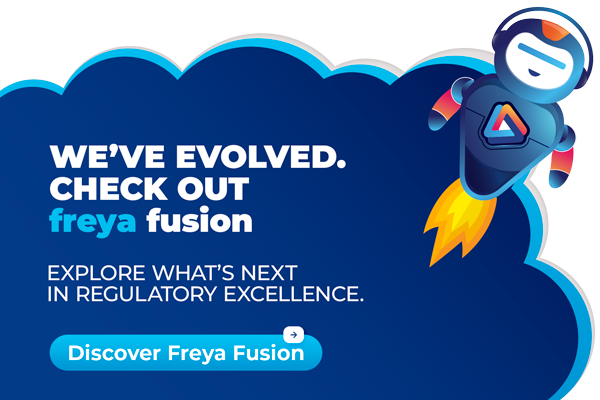Regulatory operations in life sciences are complex by design-multi-market submissions, constant updates to health authority requirements, and high stakes for compliance errors. Managing all this with disconnected tools, manual processes, and siloed data is no longer sustainable. Traditional RIMS platforms were built to organize information, not to interpret, predict, or automate it. What regulatory teams now need is a system that doesn't just manage information-it understands it, learns from it, and works alongside them.
This is where the concept of an AI-first unified RIMS steps in-a next-generation approach that fuses artificial intelligence with a comprehensive regulatory framework to transform how life sciences companies manage regulatory data, submissions, and compliance activities.
Understanding the Basics: What is a RIMS?
Before we delve into AI-first capabilities, let’s clarify what RIMS is. A Regulatory Information Management System is a software platform that helps regulatory teams in pharmaceutical, biotech, and medical device companies manage product registration information, submission planning, health authority correspondence, and lifecycle management.
In traditional setups, RIMS might operate as isolated systems or modules with limited automation, lacking true end-to-end visibility across global markets and departments.
The Evolution Toward Unified and AI-First Platforms
Legacy RIMS solutions often struggle with fragmented data, siloed processes, and manual intervention. A unified RIMS addresses these challenges by bringing together all aspects of regulatory operations-submission management, labeling, change control, document archival, and regulatory intelligence-into a centralized system. It ensures seamless collaboration, better compliance tracking, and a holistic view of global regulatory activities.
However, a unified RIMS is just the foundation. When you integrate AI-first capabilities into this structure, you shift from a reactive system to a proactive, predictive, and adaptive engine.
So, What is an AI-First Unified RIMS?
An AI-first unified RIMS is not merely a digital upgrade-it’s a transformational shift in how regulatory processes are executed. It combines the architectural integrity of a cloud-native unified platform with the decision-making power of artificial intelligence.
Here’s how it stands out:
- AI-First by Design
Instead of AI being an add-on, it's built into the core architecture of the platform. This includes generative AI, knowledge graphs, and conversational interfaces to augment regulatory tasks. - Composability
The platform allows modular configuration of data, UI, workflows, and applications. This flexibility enables life sciences companies to customize it based on product lines, therapeutic areas, or global markets. - Unified Operations
All regulatory functions-submission, content authoring, labeling, artwork management, and intelligence-operate in a single environment. This reduces duplication, increases visibility, and ensures compliance continuity. - Automation & Decision Support
AI models automate repetitive tasks like data extraction, form filling, label comparison, and even content generation for submissions. Natural language processing (NLP) and machine learning (ML) provide intelligent suggestions based on regulatory precedents or health authority responses. - Conversational UI
Teams interact with the system using AI-driven chatbots, like Freya-trained specifically for regulatory operations. This improves accessibility for users across functions and geographies. - Integrated Intelligence
With built-in regulatory intelligence, users receive alerts on changing guidelines, regulatory updates, and comparative analytics-all of which are contextual to the product and geography in question.
Why This Matters for the Life Sciences Industry
Let’s explore how this innovation impacts the regulatory ecosystem in real-world scenarios.
- Accelerated Submissions: A major hurdle in regulatory operations is managing submission timelines across different regions. An AI-first RIMS automates submission tracking, proactively notifies stakeholders of approaching deadlines, and even auto-generates parts of dossiers using pre-approved content blocks. This shortens the overall time-to-market.
- Improved Data Integrity and Traceability: With unified architecture, every piece of regulatory data is traceable, version-controlled, and linked across the product lifecycle. AI ensures anomaly detection and validates data completeness before submission, reducing the risk of rejection from health authorities.
- Smarter Labeling and Artwork Management: Labeling inconsistencies can be costly. AI-first RIMS platforms automatically compare versions of labels across markets and highlight discrepancies. Integrated proofreading tools and AI-based artwork validation ensure faster turnarounds and higher accuracy.
- Global Compliance Readiness: Whether it’s IDMP in the EU, eCTD in Canada, or SPL in the US, an AI-first unified RIMS supports region-specific formats, tracks evolving regulatory requirements, and recommends adaptations based on past decisions and rule-based automation.
- End-to-End Visibility: With centralized dashboards and smart reporting, regulatory leadership gains actionable insights into pipeline readiness, market expansions, health authority engagements, and audit preparedness—all in real-time.
Key Technologies Powering AI-First RIMS
To deliver these capabilities, platforms like Freya Fusion incorporate cutting-edge tech stacks and best practices:
- Cloud Native Infrastructure: Ensures dynamic scalability, microservices-based deployment, and rapid feature releases via CI/CD pipelines.
- Secure Architecture: Incorporates robust security protocols (MFA, RBAC, SAML, OIDC) and compliance frameworks (21 CFR Part 11, ISO 27001, NIST CSF).
- Multilingual Support: Enables global teams to interact with the system in their preferred languages, ensuring better adoption across regions.
- Open APIs & GraphQL Integration: Seamlessly integrates with existing enterprise systems like ERP, Quality Management, and Document Management Systems.
Is the Life Sciences Industry Ready?
While the promise of AI-first RIMS is clear, its adoption hinges on digital readiness, change management, and the regulatory environment's openness to automation. However, with increasing pressures for faster market access, remote audits, and digital submissions, the case for such platforms is stronger than ever.
Life sciences companies already embracing cloud transformation are naturally positioned to evolve toward AI-first unified RIMS. For others, the journey might begin with modular adoption-like intelligent labeling or automated submission planning-before scaling up to full unification.
Final Thoughts
An AI-first unified RIMS is more than just software-it's a strategic enabler of digital transformation in regulatory affairs. It allows regulatory teams to do more with less, ensure compliance without compromise, and be future-ready in an increasingly complex landscape.
For regulatory professionals, the message is clear: the future of compliance is not just digital-it’s intelligent, unified, and AI-first.
